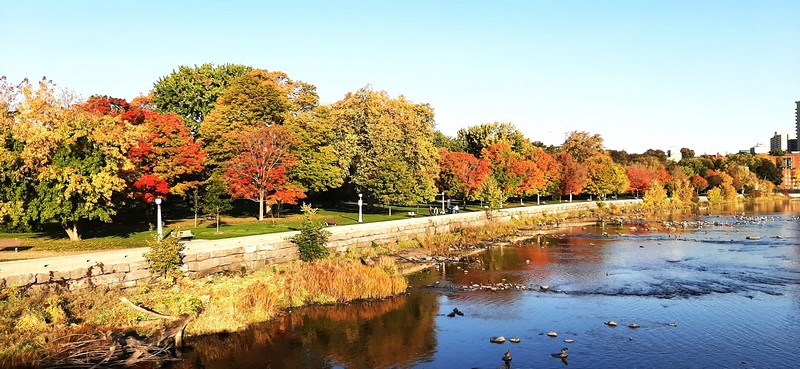Opinion
Reimagining Bank Street: here is a real opportunity
Nick Robert Grover
A long-overdue City of Ottawa feasibility study, Glebe Traffic Management Implementation Study, is exploring ways to redesign Bank Street through the Glebe, between the Queensway and the bridge over the Rideau Canal. While this study’s scope doesn’t extend to Sandy Hill in Rideau-Vanier Ward, any changes that result from it will have implications for transit between wards and could set a precedent for future changes.
The current design of Bank St.—generally four lanes with the two outside lanes devoted to parking, except during rush hour— uses the street as a thoroughfare taking people to and from the downtown core in private cars. But Bank St. is also a designated transit corridor with three major OCTranspo bus routes —6, 7, and 11—that are heavily used by residents of our Sandy Hill neighbourhood.
OCTranspo data shows that routes 6 and 7 are late 40% of the time, usually stuck in traffic. This lack of reliability is made worse by the fact that few bus stops provide shelters or benches.
The redesign of Bank St. must make other forms of transportation—walking, cycling, and above all, public transit—more appealing. This will require making choices, as these forms of transportation can’t be improved without reducing the space currently given to cars. The key to making public transit more appealing is to create dedicated bus lanes. This can cut trip times in half during rush hour and by 15 to 20% other times, according to a 2021 study by the National Association of City Transportation Officials, NACTO.
Research from NACTO has also shown that dedicated bus lanes are good for local businesses; they can bring five times more people to an area per hour than cars can. Surveys of Montreal and Philadelphia found retail did better on streets without parking. Cars may take up a lot of space but they don’t carry that many people, leading small-business owners to vastly overestimate how many patrons actually drive.
Studies from Toronto, Los Angeles, and Berlin show most shoppers live locally and walk, 20 to 30% take transit, and less than 10% drive. Admittedly, these places have higher density than Ottawa—but that really says it all. We don’t need parking to have vibrant communities; City Planning has simply failed to deliver it by any other means. For the sake of climate, affordability and accessibility, we need to make some basic investments in good public transit.
Alas, the most the City is looking to do for transit priority on Bank is ‘peak hour’ bus lanes, which do nothing to address terrible weekend traffic or accommodate the many students, retail workers, caregivers, seniors and people with mobility issues traveling in off-peak traffic. Permanent bus lanes serve transit riders at all times of day, not to mention emergency vehicles which can also make use of them.
Design matters. A good bus lane is self-enforcing, with solid red paint and big block letters clearly communicating the lane is not for other vehicles. But when planners try to have it both ways, by mixing parking and transit priority into the same lane, it becomes ineffective—as we see too often on Rideau St., where drivers tend to completely disregard the peak bus lanes. When there are no visual indicators on the road, and only confusing overhead signage, people don’t comply.
Eliminating parking on Bank Street won’t eliminate the need to make choices. But while parking and bike lanes can be moved to side streets or parallel roads, the buses don’t have anywhere else to go. We need to, for once, do something for public transit.
There is a real opportunity to improve Bank St.; the City should take advantage and push for better. This could be the first step in creating a dedicated transit corridor connecting Bank, Wellington, Rideau and Montreal Rd. to better serve the many residents who live in these areas and make us all less dependent on cars and traffic conditions.

Photo Bob Whitelaw